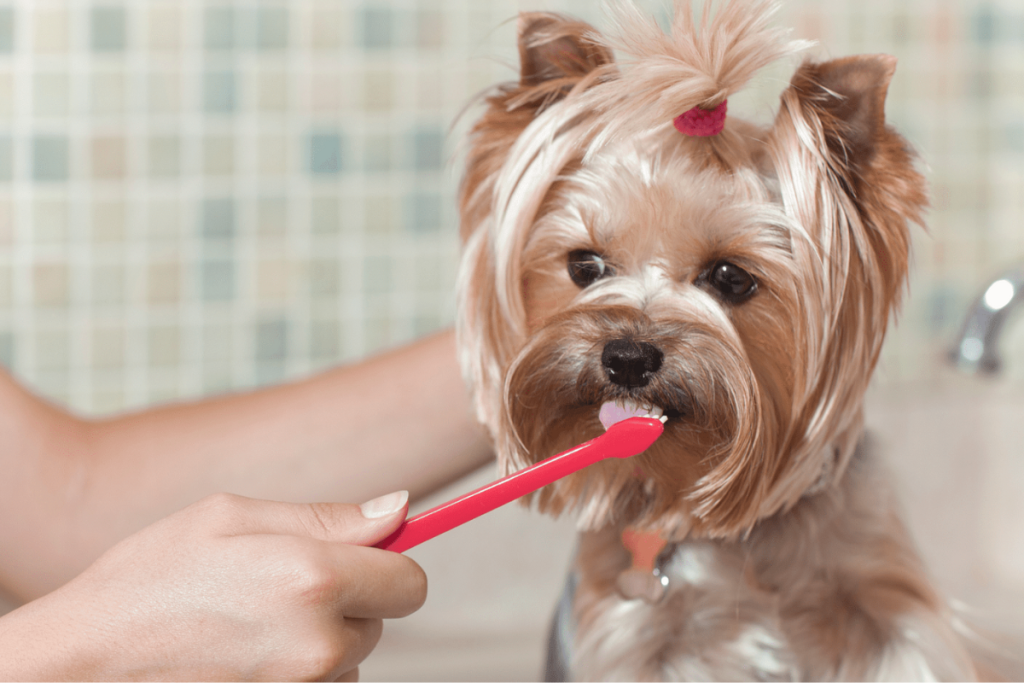
At Home Dental Care for Pets

Brushing your pet’s teeth at home doesn’t need to be a major undertaking. With a little practice, you can help fight back tartar that leads to serious gum conditions, root exposure and tooth loss.
Puppies: 28 baby teeth.
Adult dogs: 42 permanent teeth.
Kittens: 26 baby teeth.
Adult cats: 30 permanent teeth.
Fun fact: Puppies and kittens generally lose their baby teeth between 4 and 6 months.
What you will need to get started:
- Pet toothbrush
- Pet-specific toothpaste
Important: Never use human toothpaste on your pets. Many brands contain ingredients that are unhealthy for pets, such as:
- Fluoride (causes vomiting and nausea)
- Hydrogen peroxide (causes vomiting and nausea)
- Xylitol (toxic for dogs and cats)
How to brush a pet’s teeth
Step 1: Lift the upper lip and angle the brush along the gum line at a 45 degree angle.
Step 2: Use a circular motion to clean the outside of the teeth, spending about 30 seconds on each quadrant.
Step 3: If your pet is cooperative, brush the insides of the teeth with a similar motion.
Step 4: Reward your pet for a job well done! Be sure to offer lots of treats and praise.
Get regular checkups with a professional
Just like people, pets should get a dental checkup one to two times a year. Your vet can perform an oral exam of overall tooth and gum health and do a more thorough cleaning than you can at home.
Regular exams and professional cleanings help to prevent plaque and tartar build-up that can lead to serious gum disease, bone destruction and tooth loss.
- Average cost of a routine cleaning: $382**
- Average cost of pet dental disease surgery: $1,037 dog / $986 cat**
Pet health insurance is a great way to stay ready for anything. Call Klinger Insurance Group at 301-428-4939 or visit www.klingerinsurancegroup.com to learn more about pet insurance or to get a free, no-obligation quote today.

Request Your Proposal Here
Are you ready to save time, aggravation, and money? The team at Klinger Insurance Group is here and ready to make the process as painless as possible. We look forward to meeting you!

